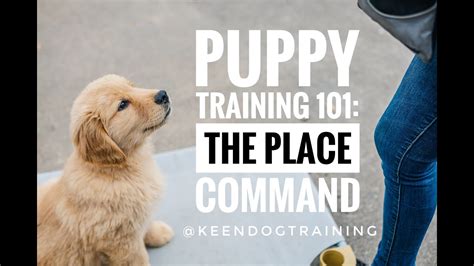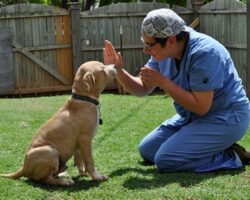Discover effective puppy training tips, from establishing routines to addressing common behavior issues. Learn about positive reinforcement and socializing techniques for obedience and a well-behaved pet.
Understanding your puppy’s behavior
When bringing home a new puppy, it’s important to take the time to understand their behavior in order to set them up for success. Puppies are full of energy and curiosity, so it’s natural for them to exhibit certain behaviors as they navigate their new environment. It’s important to remember that puppies are still learning and growing, so patience and understanding are key when it comes to addressing their behavior.
One common behavior of puppies is chewing and biting. Puppies explore the world around them by using their mouths, so it’s not uncommon for them to chew on things they shouldn’t or nip at your hands and feet. Understanding that this behavior is natural for puppies is the first step in addressing it. Providing appropriate chew toys and redirecting their attention when they start to chew on furniture or other items will help teach them what is acceptable to chew on.
Another important behavior to understand is a puppy’s need for social interaction. Puppies are naturally social animals and require plenty of interaction and socialization in order to grow into well-adjusted adult dogs. This means taking the time to expose your puppy to new people, animals, and environments in a positive and controlled way. By providing positive social experiences, you can help your puppy develop into a confident and friendly adult dog.
Establishing a routine for training
Establishing a routine for training
Establishing a routine for training
When it comes to puppy training, one of the most important factors for success is establishing a consistent routine. Dogs thrive on routine and structure, so it’s crucial to set a schedule for training sessions, feeding times, potty breaks, and playtime. This predictability helps your puppy feel secure and understand what is expected of them.
Start by creating a daily schedule that includes designated training times. Whether it’s a morning session before breakfast or an evening session after dinner, find a time that works for both you and your pup. Stick to the same time each day to help your puppy anticipate and prepare for training.
Additionally, be sure to incorporate regular potty breaks, walks, and meals into the routine. Consistency in these activities will help your puppy learn when and where they are supposed to relieve themselves, reducing accidents in the house and aiding in potty training.
Creating a designated potty area
Creating a designated potty area
When it comes to puppy training, one of the first things you’ll want to establish is a designated potty area for your new pup. This will not only help with house training, but it will also make it easier for your puppy to understand where it’s appropriate to go to the bathroom.
One of the best ways to create a designated potty area is by using positive reinforcement techniques. You can start by choosing a specific spot in your yard or near your home where you want your pup to do its business. Then, every time your puppy uses that spot, be sure to give it plenty of praise and maybe even a small treat.
Consistency is key when it comes to creating a designated potty area. Be sure to take your puppy to the same spot every time it needs to go outside, and be patient as your pup learns where it’s supposed to do its business. With time and repetition, your puppy will start to understand what is expected of it.
Using positive reinforcement techniques
Positive reinforcement techniques are a crucial part of training your new puppy. It involves rewarding your puppy for exhibiting good behavior, rather than punishing them for bad behavior. This form of training helps to build a strong bond between you and your pup, and encourages them to repeat positive behaviors. When using positive reinforcement, it’s important to be consistent in your rewards, and to make sure the reward is given immediately after the desired behavior is displayed.
One of the most effective forms of positive reinforcement is using treats. When your puppy performs a command or behavior you’re trying to teach, reward them with a small, tasty treat. This will help them associate the behavior with receiving a reward, making them more likely to repeat it in the future. Additionally, using toys, praise, and affection as rewards can also be highly effective in reinforcing positive behaviors.
It’s important to remember that positive reinforcement should be used in combination with other training techniques, such as establishing a routine and teaching basic commands. When used correctly, positive reinforcement can be an incredibly powerful tool in setting your new pup up for success in their training.
Teaching basic commands and obedience
When bringing a new puppy into your home, it’s important to start training them as soon as possible. Teaching your pup basic commands and obedience is essential for their development and will make your life as a pet owner much easier. The key to successful training is consistency and positive reinforcement.
Start with the basic commands such as sit, stay, and come. Use positive reinforcement techniques such as treats and praise to encourage your puppy to follow these commands. Be patient and consistent with your training, as it may take some time for your puppy to fully grasp these commands.
Once your puppy has mastered the basic commands, you can move on to more advanced obedience training. This may include teaching your pup to walk on a leash, not to jump on people, and to greet others politely. Again, use positive reinforcement and consistency to reinforce the behaviors you want to see in your puppy.
Socializing your puppy with other dogs
When bringing a new puppy into your home, it’s important to consider how you will socialize them with other dogs. Socialization is a crucial part of a puppy’s development, as it helps them learn to interact and communicate with other dogs in a positive manner. In order to ensure that your puppy grows up to be well-adjusted and friendly towards other dogs, it’s essential to start the socialization process early on.
One effective way to socialize your puppy with other dogs is by enrolling them in puppy socialization classes. These classes provide a safe and controlled environment for puppies to interact with each other, as well as with other dogs of different ages and sizes. This structured setting allows puppies to learn how to behave around other dogs, while also being supervised by experienced trainers who can guide their interactions.
In addition to puppy socialization classes, it’s also important to take your puppy to different dog-friendly locations such as parks and dog-friendly cafes. Exposing your puppy to different environments and allowing them to meet and interact with other dogs outside of a class setting can help them become more confident and well-rounded. It’s important to always monitor your puppy’s interactions and step in if any potential conflicts arise, in order to ensure a positive and safe experience for your puppy.
Addressing common behavioral issues
One of the most challenging aspects of puppy training is addressing common behavioral issues. It’s important to understand that puppies, like humans, have their own unique personalities and tendencies. Some common behavioral issues that may arise include excessive barking, destructive chewing, jumping up on people, and separation anxiety. It’s crucial for pet owners to address these issues early on to prevent them from becoming ingrained habits.
One effective way to address common behavioral issues in puppies is through positive reinforcement techniques. This involves rewarding desirable behavior with treats, praise, and affection, while ignoring or redirecting undesired behavior. Consistency and patience are key when using positive reinforcement, as it may take time for puppies to fully understand what is expected of them.
In addition to positive reinforcement, it’s also important to socialize your puppy with other dogs, as this can help prevent behavioral issues from arising in the first place. By exposing your puppy to a variety of different environments, people, and other animals, you can help them develop confidence and good manners. This can also help reduce the likelihood of fear-based aggression and separation anxiety.
Frequently Asked Questions
When should I start training my new puppy?
It’s best to start training your new puppy as soon as you bring them home. The earlier you start, the easier it will be to establish good habits and prevent problem behaviors.
What are some basic commands to start with for puppy training?
Some basic commands to start with for puppy training include sit, stay, come, and leave it. These commands will form the foundation for more advanced training later on.
How can I potty train my new puppy?
Potty training your new puppy takes patience and consistency. Establish a routine for bathroom breaks, use positive reinforcement, and clean up accidents with an enzymatic cleaner to remove the scent.
What are some common mistakes to avoid when training a new puppy?
Some common mistakes to avoid when training a new puppy include using punishment-based methods, being inconsistent with commands, and not socializing your puppy with other dogs and people.
How can I teach my puppy to walk on a leash?
To teach your puppy to walk on a leash, start by getting them used to wearing a collar and leash indoors, then practice walking in a quiet, low-distraction area. Use treats and positive reinforcement to encourage good leash manners.
What should I do if my puppy is exhibiting unwanted behaviors?
If your puppy is exhibiting unwanted behaviors, address the issue promptly with positive reinforcement training. Consider seeking professional help from a certified dog trainer if the behavior persists.
What are some important factors to consider when training a new puppy?
Some important factors to consider when training a new puppy include patience, consistency, positive reinforcement, and socialization. Remember that training takes time and effort, but it will ultimately strengthen the bond between you and your puppy.





